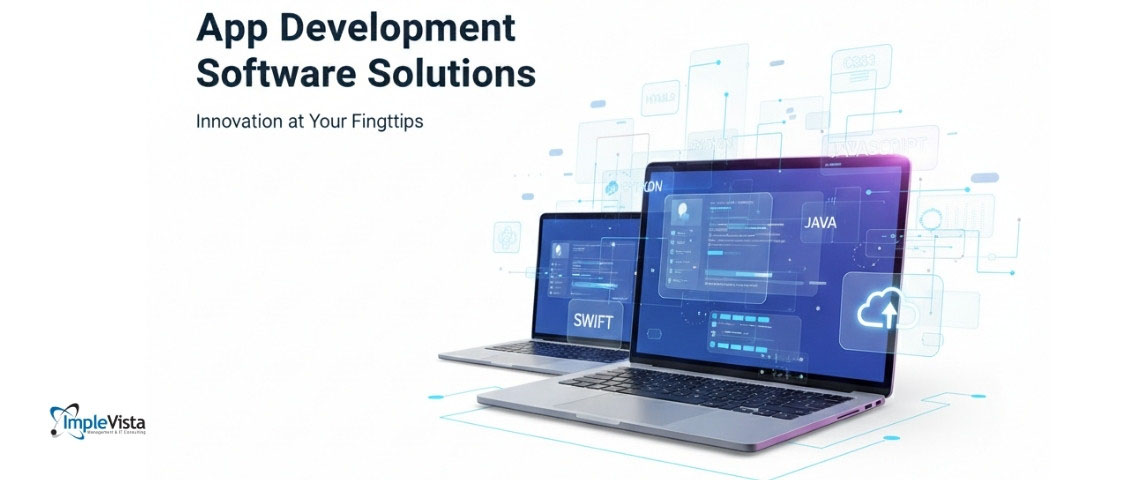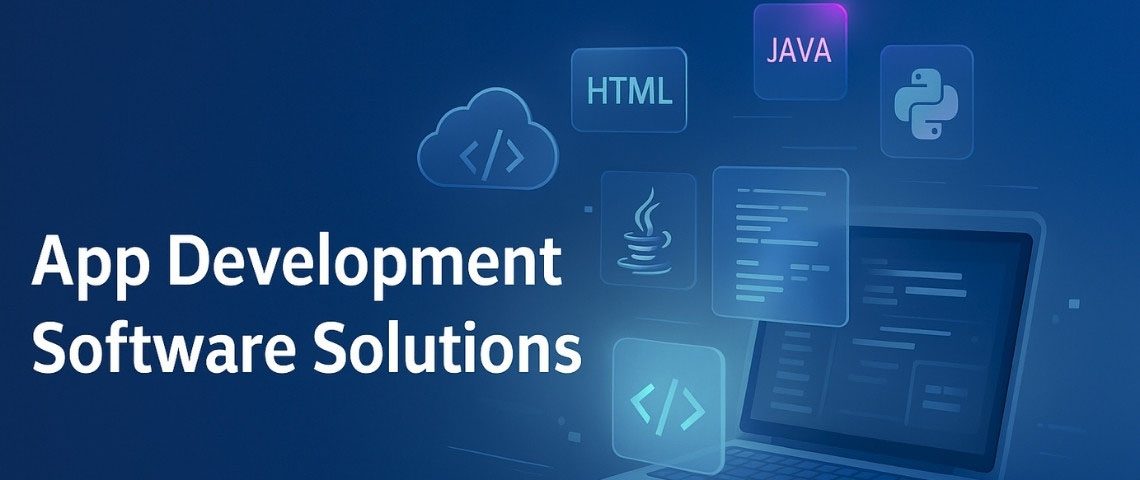Developing a mobile or web app can seem daunting – but free and open-source tools have dramatically lowered the barrier to entry. In fact, as of mid-2025 the Apple App Store hosts around 1.9 million apps. You don’t need a huge budget or proprietary licenses to build apps.
Open-source and free app development software (frameworks, IDEs, and platforms) let teams and even individuals create robust, high-quality apps with minimal cost. For example, modern low-code and open-source platforms empower anyone to turn an idea into a working app at little to no cost.
In practice, open-source app development tools accelerate project timelines and flexibility. Studies show that pre-built components and visual design tools can speed up development by as much as 10× compared to hand-coding every screen. By reusing community-tested code and plug-ins, teams launch projects faster, avoid reinventing the wheel, and iterate quickly.
They also avoid vendor lock-in and costly licenses – you can inspect and customize the code to fit your needs. As Implevista’s own developers note, frameworks with widget libraries and templates “dramatically speed up app creation,” enabling companies to launch mobile products months sooner.
Notably, free/open tools are often backed by vibrant developer communities. For example, the Flutter and React Native communities contribute thousands of packages, tutorials, and forums. This community support means better documentation, frequent updates, and a wealth of learning resources at no charge.
And because these tools cover mobile app development, cross-platform apps, and web apps alike, businesses can build entire digital solutions (mobile + web) without breaking the bank. In fact, our Mobility services team at Implevista specializes in guiding clients through these choices: “Implevista’s Mobility services specialize in advising clients on framework selection based on project needs”.
Overall, the key benefits of free/open-source app development software include:
- Cost savings: No licensing fees or vendor lock-in. You can download and use the tools for free, even in commercial projects.
- Customization: Full source code access means you can tweak any aspect of the framework to fit unique requirements.
- Community support: Large communities and rich plugin ecosystems (for Flutter, Cordova, etc.) mean solutions to common problems are readily available.
- Rapid prototyping: Visual builders and pre-built UI components (as seen in low-code platforms) allow you to iterate ideas quickly.
- Cross-platform deployment: Many tools let you write one codebase (in Dart, JavaScript/TypeScript, C#, etc.) and deploy to both Android and iOS simultaneously, saving time and effort.
These advantages make free/open-source app development software an attractive strategy for startups, small businesses, and even enterprises looking to lower development risk.

What to Look for in App Development Software
Before diving into specific tools, consider these factors when choosing app development software:
- Platform Support: Ensure the tool supports all target platforms (e.g. Android, iOS, Web) you need. Cross-platform frameworks like Flutter and React Native can target multiple platforms from one codebase.
- Programming Language: Pick a language your team is comfortable with (Dart, JavaScript/TypeScript, C#, Python, etc.). For instance, React Native uses JavaScript, while Xamarin uses C#.
- Performance and Native Features: If you need near-native performance, choose a framework that compiles to native code or has access to native APIs. Flutter and Xamarin offer native-level performance.
- Community and Maturity: Look for tools with active communities and regular updates. Popular projects like Flutter and Android Studio are supported by Google, while others like Android Studio and VS Code have millions of users.
- Ease of Use: Some tools (e.g. Budibase, Appsmith) provide low-code or drag-and-drop interfaces for rapid development. Others (Flutter, React Native) require more coding but offer greater flexibility.
- Integration and Plugins: Ensure the platform has plugins or libraries for the features you need (push notifications, analytics, payment, etc.). For example, Apache Cordova has a rich plugin ecosystem for device features.
- Licensing: Verify the license (most listed here are MIT, Apache, or BSD – all permissive). Even though free, some open-source projects have dual licenses; check if any proprietary add-ons exist.
By matching these criteria to your project’s priorities, you can select the best app development software for your needs. For personalized advice, our [Mobility services] can help map your requirements to the right tools.
1. Flutter – Google’s Free, Open-Source UI Toolkit
Flutter is a rapidly growing open-source framework from Google for building beautiful, natively compiled apps. It uses Dart language and provides a rich set of customizable widgets. In fact, as the official docs state, “Flutter is an open source UI toolkit for building beautiful, natively compiled applications for mobile, web, desktop, and embedded devices from a single codebase”.
This means you can write one app in Dart and target iOS, Android, and even web and desktop. Flutter’s hot-reload feature lets developers see changes instantly, speeding up debugging and design. Key features of Flutter include a fast Skia graphics engine (for smooth UIs), a large widget catalog, and support for Material Design and Cupertino (iOS-style) components. Its performance is usually on par with native apps.
Many developers praise Flutter for letting them build highly interactive UIs with less code. Flutter is completely free to use and released under a permissive BSD license, making it ideal for startups and enterprises alike.
2. React Native – Open Source JavaScript Framework by Facebook
React Native is an MIT-licensed framework from Meta (Facebook) that uses JavaScript and React to build native mobile apps. “React Native is an open source framework for building Android and iOS applications using React and the app platform’s native capabilities”.
In other words, React Native lets you write your app in JavaScript (or TypeScript) and still render real native UI components. This approach provides true native look and feel and performance. React Native’s strength lies in its large ecosystem and hot-reloading feature.
You can leverage thousands of npm libraries and community components. Many companies use React Native to share code between iOS and Android while delivering native performance. For example, Discord and Shopify have used React Native for parts of their apps. Like Flutter, React Native is completely free and open-source, with regular updates from Meta and the community. It integrates well with existing native code, allowing teams to gradually adopt it in a project.
3. Android Studio – Google’s Free Official IDE for Android
Android Studio is Google’s free, official Integrated Development Environment (IDE) for Android app development. While not itself a framework, it’s the primary app development software for building native Android apps. As the Android docs note, “Android Studio is the official Integrated Development Environment (IDE) for Android app development”.
It’s based on JetBrains’ IntelliJ IDEA and provides powerful code editing, visual design tools (like a layout editor), a device emulator, profiling tools, and seamless Gradle build integration. Android Studio is free to download and runs on Windows, macOS, and Linux.
It supports Java and Kotlin (Google’s modern Android language) for development. Even if you’re targeting cross-platform, having Android Studio can be useful for fine-tuning Android builds and performance. It’s open enough that many consider it effectively free app dev software for Android.
Implevista’s own web development team underscores the importance of such professional tools: “We utilize modern frameworks and technologies to build secure, scalable. web applications” – and similarly, Android Studio leverages modern Android frameworks (Jetpack libraries, etc.) to build robust mobile apps.
4. Ionic – Free Open-Source Hybrid App Framework
Ionic is an open-source mobile UI framework for building hybrid (web-based) apps. It’s built on web technologies (HTML, CSS, JavaScript) and integrates with Angular, React, or Vue. As Bitcot explains, “Ionic is an open-source framework built on Angular and powered by Apache Cordova”. Developers write one web codebase, and Ionic’s tools bundle it as a native app using Cordova or Capacitor under the hood.
With Ionic, you get a rich library of pre-made UI components (forms, buttons, navigation), which speeds up development. It’s especially useful for teams with strong web skills looking to quickly prototype apps that run on iOS, Android, and the web.
Ionic’s large community means plenty of tutorials and plugins. Being open source (MIT license) and free to use, Ionic is often chosen for hybrid app development where “time and cost savings” are priorities. For example, if you need to build a simple cross-platform app or progressive web app (PWA) using familiar web frameworks, Ionic delivers without extra licensing fees.
5. Apache Cordova (PhoneGap) – Open-Source Mobile Dev Framework
Apache Cordova (formerly PhoneGap) is a veteran open-source framework that lets developers build mobile apps using web technologies. The official Cordova documentation states: “Apache Cordova is an open-source mobile development framework.
It allows you to use standard web technologies – HTML5, CSS3, and JavaScript for cross-platform development”. Cordova wraps your web app in a native container, giving you a single codebase that runs on multiple platforms. Cordova shines for projects where budget and speed are critical. You can develop your app as a web application and then deploy it to iOS and Android stores with one build process.
It also has a mature ecosystem of plugins to access device hardware (camera, GPS, file storage, etc.) from JavaScript. Cordova itself is Apache-licensed and free. A major downside is performance (WebView-based apps can be slower than truly native ones), but for many use cases (especially data-driven or content apps), Cordova remains a go-to free tool.
6. Xamarin – Microsoft’s Free C# Cross-Platform Framework
Xamarin (now open source under Microsoft) lets .NET/C# developers build native Android and iOS apps. As Bitcot notes, “Xamarin is an open-source framework that lets you build high-performance apps for iOS, Android… using the familiar power of C# and .NET”. Essentially, you write your app logic in C# with Xamarin.Forms (or native UIs), and Xamarin compiles it to native binaries. The result is near-native performance and look, with the productivity of C# and .NET.
Xamarin is free as part of Visual Studio Community or Visual Studio Code with extensions. It’s ideal for teams already skilled in C#. You can share a lot of code across platforms – even business logic and data models – while still tapping into native device features. Because it’s backed by Microsoft, Xamarin has a solid ecosystem of libraries. If your team prefers C# over JavaScript or Dart, Xamarin is a top free choice for mobile app development that requires strong performance.

7. NativeScript – Open-Source JavaScript/TypeScript Framework
NativeScript is a free, open-source framework for building native iOS and Android apps using JavaScript or TypeScript. According to Bitcot, “NativeScript is a powerful cross-platform framework that lets developers build truly native apps for both iOS and Android—using the web technologies they already know, like JavaScript and TypeScript”.
NativeScript renders native UI components directly, not web views, giving real native performance. It also provides direct access to native APIs, so you can use device features with JS code. For teams that love web development, NativeScript offers a bridge to mobile.
It supports Angular and Vue for structure and has plugins for common features. Because it’s open source (Apache license) and free, you can inspect its code and contribute. In practice, NativeScript is chosen when you want the speed of JavaScript development but need a 100% native experience on mobile devices.
8. Kivy – Open-Source Python Framework for Apps
Kivy is an open-source Python library for developing multi-touch applications, often used for mobile and desktop. Its documentation describes Kivy as “an open source software library for the rapid development of applications equipped with novel user interfaces, such as multi-touch apps”.
If your team is experienced in Python, Kivy lets you build cross-platform apps (Android, iOS, Windows, Linux) using a single codebase. It includes a custom UI toolkit and graphics engine optimized for touch input. Kivy is fully free under the MIT license.
While Kivy apps may not look as “native” as those from other frameworks, it’s a great choice for unique UI designs and rapid prototyping. For example, Kivy is popular in education and hobbyist projects, and even some business apps where Python logic is required.
As an open-source tool, Kivy is constantly improving with community contributions – and it lets developers tap into Python’s rich ecosystem for things like data processing or machine learning inside apps.
9. Godot Engine – Free Open-Source Game/Multimedia Engine
Godot is an open-source game engine that can also build 2D/3D apps for mobile. It’s completely free (MIT license) and cross-platform. As one open-source spotlight notes, “Godot is a free and open source, cross-platform game engine that allows you to create both 2D and 3D games”. While primarily targeted at games, Godot is increasingly used for any interactive app or UI-rich application.
Godot uses its own Python-like GDScript (or optionally C#) and has a scene-based editor. It can export projects to Android, iOS, HTML5, Windows, Linux, and more with one click. Because it’s open source, developers can customize the engine itself if needed.
Godot’s built-in tools (physics, animation, UI, etc.) mean you don’t have to assemble lots of separate libraries. For mobile apps that require advanced graphics, animations, or games, Godot stands out as a free and flexible solution.
10. Budibase – Open-Source Low-Code App Builder
Budibase is a free, open-source low-code platform for building internal business apps and dashboards. It’s not for consumer mobile apps, but it deserves mention as an app development tool for quickly creating data-driven interfaces. Budibase “leverages an open-source, low-code platform that allows your team to prototype internal business applications”.
You build apps by dragging and dropping components and connecting to data sources (databases, APIs). Because Budibase is open source, you can self-host it for free and extend it with plugins. It includes about 40 prebuilt components for common needs like tables, forms, charts, etc.
Teams use Budibase to create admin panels, CRMs, inventory tools, and other internal apps in days instead of months. While not a traditional “app development SDK,” Budibase shows how open-source tools can accelerate app creation even for non-technical users. It’s ideal for small businesses needing custom internal tools without a full dev team.
11. Appsmith – Open-Source Low-Code Development Platform
Appsmith is another free, open-source low-code platform aimed at building data-centric web and mobile apps (often internal tools or dashboards). On Appsmith’s website, they describe themselves as “the leader in open-source low-code development” for enterprise apps. Like Budibase, Appsmith offers a drag-and-drop UI builder and a way to connect to databases and APIs. You can write custom logic in JavaScript if needed.
Because Appsmith is open source (Apache 2.0 license), you can run it on your own servers at no cost. It supports common use cases like support ticket portals, admin dashboards, and CRUD apps. Development teams can get a fully-functional app running in hours by wiring up existing data sources and using built-in widgets. For businesses that want a fast, low-code entry into app building while keeping costs zero, Appsmith is an attractive solution.
12. Visual Studio Code – Free Open-Source Code Editor
Although not an “app framework,” Visual Studio Code (VS Code) deserves an honorable mention as free, open-source app development software. It’s a lightweight code editor with a huge extension ecosystem for virtually any programming language (JavaScript, Dart, Python, C#, etc.). VS Code is “a free and open-source code editor, which runs on macOS, Linux, and Windows”.
Why include an editor in this list? A great IDE or editor is the foundation for any software project. Developers building apps in Flutter, React Native, Node.js, and other free tools often choose VS Code because it’s fast, customizable, and free. It has features like IntelliSense (autocomplete), built-in Git integration, and debugging tools.
VS Code’s marketplace offers thousands of plugins – from Android emulators to Kubernetes tools – making it a go-to environment for app developers at no cost. In short, VS Code complements the above frameworks by providing a top-notch free development experience.
Conclusion
Free and open-source app development software has reached maturity. You no longer need expensive licenses to create high-quality mobile apps. Each of the tools above is widely adopted, regularly updated, and backed by active communities. Whether you choose a coding framework (Flutter, React Native, Xamarin, etc.) or a low-code platform (Budibase, Appsmith), you can build powerful mobile or web apps on a budget.
At Implevista, we leverage these tools daily. Our Mobility team guides clients on selecting the right framework, noting that using modern open-source frameworks can “speed up app creation” dramatically. Meanwhile, our web development services emphasize secure, scalable applications built with modern frameworks.
To explore how these tools fit your business, contact our Mobility services team. You can also check out our Web Development services for SEO-friendly, responsive solutions. Don’t forget to subscribe to the Implevista blog for more expert insights on app development, or read related posts on mobile strategy and software tools.

FAQ About App Development Software Solutions
- What is the best free app development software?
It depends on your needs, but popular free options include Flutter, React Native, and Ionic for cross-platform mobile apps. For Android specifically, Android Studio is free. Each tool has pros and cons (see above list). Ultimately, the “best” choice matches your team’s skills and target platforms.
- Is Flutter open source and free to use?
Yes. Flutter is a completely free, open-source UI toolkit by Google. It is released under a BSD license. You can use it for commercial and personal projects at no cost.
- Can I build iOS apps on Windows with these tools?
With most free frameworks like Flutter, React Native, and Ionic, you can develop on Windows but to build/publish an iOS app you’ll need access to Xcode on macOS. However, you can still write code on Windows and use cloud build services or a Mac machine later for the final build.
- What programming languages do I need for these tools?
It varies: Flutter uses Dart, React Native uses JavaScript/TypeScript, Xamarin and Budibase use C#, Kivy uses Python, etc. Choose a tool that uses a language your team knows (or is willing to learn).
- Are there no-code or low-code open-source app builders?
Yes. Tools like Budibase and Appsmith (both open-source) let you visually create apps without much coding. They are great for internal tools and dashboards. For more consumer-facing apps, consider frameworks like Flutter or React.
- Which is better, Flutter or React Native?
Both are leading open-source frameworks. Flutter uses Dart and renders its own UI widgets; React Native uses JavaScript and native components. Flutter often gets praise for consistent performance and beautiful UIs, while React Native benefits from the large JavaScript ecosystem. The “best” choice depends on your team’s language preference and project needs.
- Do these free tools have hidden costs?
The core software is free/open source, but you may still pay for developer time, third-party services, or optional enterprise support. Watch out for paid plugins or services (like certain backend integrations or analytics). Also, thorough testing is needed: even free tools require investment in QA and maintenance.
- Can open-source tools handle complex apps?
Many can. Xamarin, Flutter, and React Native power large-scale apps in production. However, consider each tool’s limitations: for example, low-code platforms may not fit extremely complex apps, and Cordova might be slow for graphics-heavy apps. For mission-critical apps, combine open-source frameworks with experienced developers to address any performance or security gaps.
- How do I learn these tools for free?
Each project’s documentation is online and free (Flutter.io, ReactNative.dev, etc.). There are countless free tutorials, courses, and community forums. Implevista’s blog also offers articles on these topics. Additionally, practice by building small apps or cloning examples. Most tools have starter templates to help you get going without cost.
- Are these tools suitable for enterprise development?
Yes. Many enterprises use open-source tools (e.g. Alibaba uses Flutter, Bloomberg uses React Native). They can save budget while still meeting enterprise needs, especially since you can inspect and secure the code yourself. Frameworks like Xamarin and low-code platforms like Appsmith even offer enterprise support options. Just plan for things like regular updates and in-house expertise.




